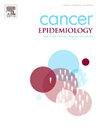Associations between neighborhood socioeconomic status, readmission, and mortality for patients with cancer: A nationwide cohort study
IF 2.3
3区 医学
Q3 ONCOLOGY
引用次数: 0
Abstract
Background
Cancer presents a disproportionate burden, particularly among individuals from low socioeconomic status neighborhoods. Disparities in outcomes persist, influenced by limited access to healthcare services, cultural barriers, and neighborhood socioeconomic status. This nationwide study aimed to investigate the associations between neighborhood socioeconomic status and mortality/readmission among hospitalized Medicare-eligible patients with cancer.
Methods
We conducted a retrospective cohort study of patients with cancer who were hospitalized between 2020 and 2022, using United States (U.S.) Medicare claims data. We used logistic regression models to explore the association between neighborhood socioeconomic status, measured via the corrected Duke Area Deprivation Index, and 1) 30-day mortality and 2) hospital readmission rates. Odds ratios were calculated to assess for associations in a stepwise manner after adjusting for sociodemographic characteristics, comorbidities, and regional/hospital characteristics.
Results
The study included 266,269 admissions. Patients from neighborhoods with a higher area deprivation index (i.e., lower socioeconomic status) exhibited higher mortality rates (adjusted odds ratio 1.06 [95 % confidence interval 1.01, 1.12]) compared to patients from lower area deprivation index neighborhoods. There were no overall differences in readmission rates for patients from high area deprivation index neighborhoods. High area deprivation index neighborhoods were associated with less teaching hospitals (30.2 % vs 39.9 %), more public hospitals (16.4 % vs 11.2 %), and less primary care providers (mean 66 vs 93.2) when compared to low area deprivation index neighborhoods.
Conclusion
The study revealed significant associations between neighborhood socioeconomic status and mortality in patients with cancer in the U.S. Understanding the interplay between neighborhood socioeconomic status and oncologic outcomes is crucial for developing targeted interventions to provide equitable oncology care.
社区社会经济地位、再入院和癌症患者死亡率之间的关系:一项全国性队列研究
癌症是一种不成比例的负担,特别是在社会经济地位低的社区中。由于获得医疗保健服务的机会有限、文化障碍和社区社会经济地位的影响,结果的差异仍然存在。本全国性研究旨在调查符合医疗保险条件的住院癌症患者的社区社会经济地位与死亡率/再入院率之间的关系。方法:我们对2020年至2022年间住院的癌症患者进行了回顾性队列研究,使用美国(U.S.)医疗保险索赔数据。我们使用逻辑回归模型来探讨社区社会经济地位(通过修正的杜克地区剥夺指数来衡量)与1)30天死亡率和2)医院再入院率之间的关系。在调整了社会人口特征、合并症和地区/医院特征后,计算优势比以逐步评估相关性。结果该研究包括266269名入院患者。与来自区域剥夺指数较低社区的患者相比,来自区域剥夺指数较高社区(即社会经济地位较低)的患者死亡率较高(调整优势比1.06[95 %置信区间1.01,1.12])。来自高区域剥夺指数社区的患者再入院率没有总体差异。与低区域剥夺指数社区相比,高区域剥夺指数社区的教学医院较少(30.2% %对39.9 %),公立医院较多(16.4 %对11.2 %),初级保健提供者较少(平均66对93.2)。结论:该研究揭示了美国癌症患者的社区社会经济地位与死亡率之间的显著相关性,了解社区社会经济地位与肿瘤预后之间的相互作用对于制定有针对性的干预措施以提供公平的肿瘤治疗至关重要。
本文章由计算机程序翻译,如有差异,请以英文原文为准。
求助全文
约1分钟内获得全文
求助全文
来源期刊

Cancer Epidemiology
医学-肿瘤学
CiteScore
4.50
自引率
3.80%
发文量
200
审稿时长
39 days
期刊介绍:
Cancer Epidemiology is dedicated to increasing understanding about cancer causes, prevention and control. The scope of the journal embraces all aspects of cancer epidemiology including:
• Descriptive epidemiology
• Studies of risk factors for disease initiation, development and prognosis
• Screening and early detection
• Prevention and control
• Methodological issues
The journal publishes original research articles (full length and short reports), systematic reviews and meta-analyses, editorials, commentaries and letters to the editor commenting on previously published research.
 求助内容:
求助内容: 应助结果提醒方式:
应助结果提醒方式:


